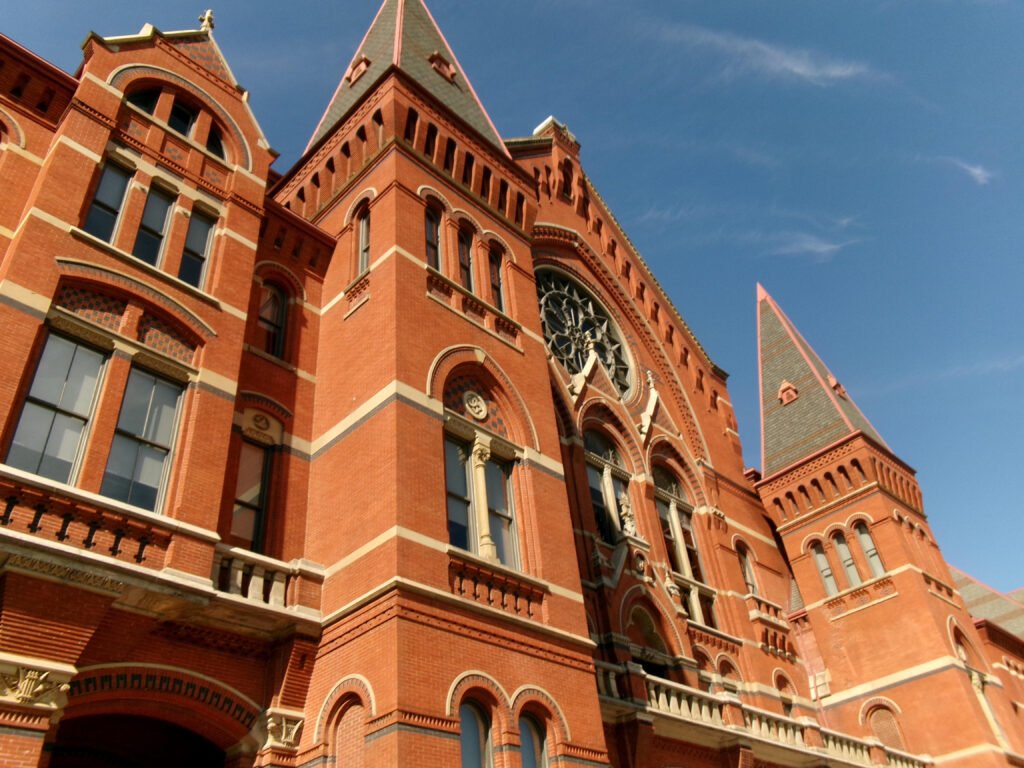Preserving Cincy’s History

The magnificent building towers over 14th and Elm—impossible to miss. Built of brick, sandstone and slate, this historic landmark rises over the Queen City as an eye-catching sight that warrants a pause to stop and stare. Its sharp and brilliant spires, ornamental metalwork and intricate Gothic flourishes not only command the attention of passersby but also speak to a history stretching back more than a century. For the past 140 years, Cincinnati Music Hall has stood as a key architectural treasure in the heart of the city. This popular venue for orchestras, ballets, special events and other performances is steeped in history, much of it reflected in its design. Buildings like these are the very heart of the city itself.
Now, imagine Music Hall without the very features that make it memorable. Imagine its High Victorian style replaced with modern design–no original detailing, no columns and no timeless characteristics that signal you’re in the presence of the grand Music Hall. Would you walk right past it? Would you spare a glance at a building that looks like any other, unaware of the rich history the original building once held? Would you believe orchestras and musical events had performed there since 1878? When we alter buildings without considering their history, reducing them to unrecognizable structures, we leave little opportunity to honor what came before.
Fortunately, Music Hall has undergone tasteful and considerate renovations in the past decade, preserving most of the original features that enshrine it as a valuable piece of architectural history. But what about the buildings that haven’t been treated with the same care? Many historic structures in Cincinnati have faced alteration, renovation or even demolition that ignores the history and influence of the era in which they were built. Historic buildings are vital to the Cincinnati community, and they must be protected and appreciated for the value they bring to the city.
With its wide range of historic architectural styles, Cincinnati showcases influences from Italianate, High Victorian Gothic, Greek Revival, Art Deco and many others. These styles appear in government buildings, downtown shops, educational and entertainment centers and even residential neighborhoods, telling the story of Cincinnati through the decades. Just as importantly, these styles and influences reflect the heritage and early populations of the city. German immigrants, for example, brought with them their culture and industry, leaving a lasting impact on the way structures were crafted in the city we know and love. Without the preservation of these original details and design, we lose sight of the heart that makes our city beat with beauty, charm and memory.
When I moved to Cincinnati, I remember being absolutely enchanted by the historic beauty of Over-the-Rhine, the grandeur of the downtown Central Business District and the unique charm of the houses tucked away in the Gaslight District. I could tell that Cincinnati was a city that took pride in and respected its rich cultural history. Even in the apartment I rent now, I have a deep appreciation for the original hardwood floors, the detailing that still adorns the roof and the doorframes that exude a charm that cannot be recreated. Every historic detail in these buildings deserves to be protected and maintained–not bulldozed or stripped of character.
Fortunately, over the years, historic conservation legislation has increased, and more historic buildings have been invested in and revitalized in ways that preserve their history and character. Numerous organizations— such as the City of Cincinnati Planning Department, the Cincinnati Preservation Association, and the Historic Conservation Board— work to provide protection, legislation, and education that maintain the originality of historic districts and structures while encouraging restoration and revitalization. However, many buildings remain at risk of neglect and still face the pressures of redevelopment.
Now, you may be wondering: how can I help preserve the historic buildings of Cincinnati that we all know and love? Fortunately, there are many volunteer opportunities to contribute to conservation and preservation efforts. The Cincinnati Preservation Association is always looking for passionate individuals who care about the city’s history and community. If that feels like too big of a commitment, there are many other ways to help. You can notify the city if you spot deteriorating historic buildings, contact City Council representatives to share your voice and passion for preservation, and educate and advocate within your community. Do a bit of research and reach out to one of these organizations– they would love your help.
We Cincinnatians are as special as our city, and our passion for preserving its history is what makes us unique. Next time you walk past Music Hall, visit Union Terminal, or explore the Taft Museum of Art, take a moment to soak in the history around you. It’s been a joy for me to acquaint myself with Cincinnati’s charm, and I hope that future generations will be able to enjoy the city’s history just as I have.